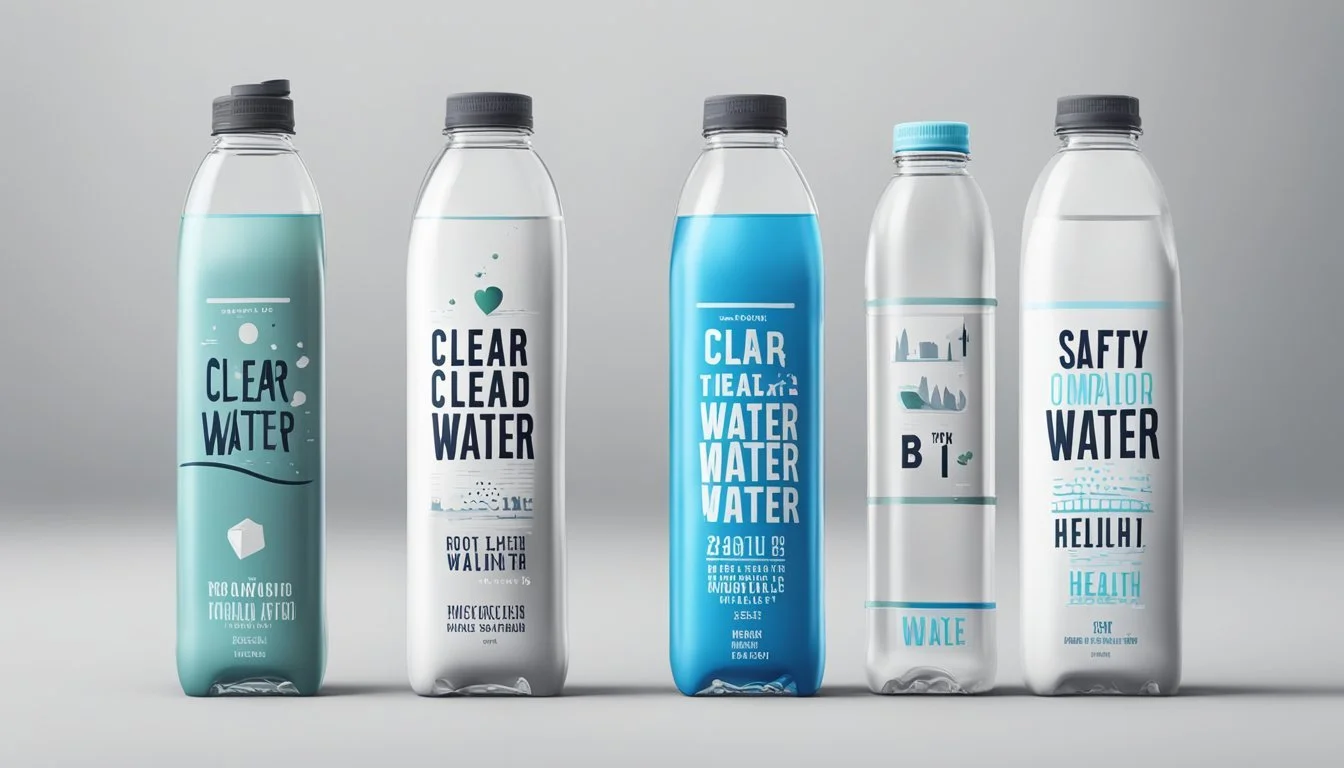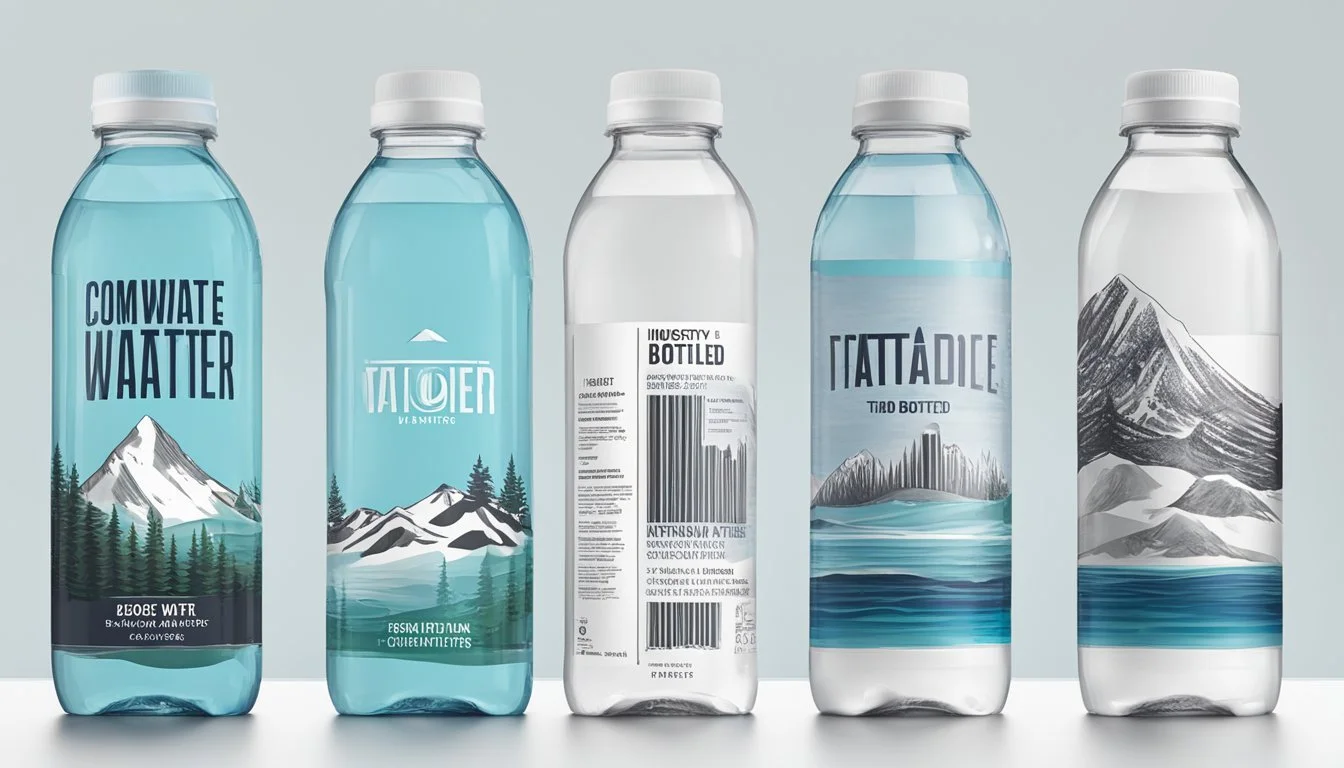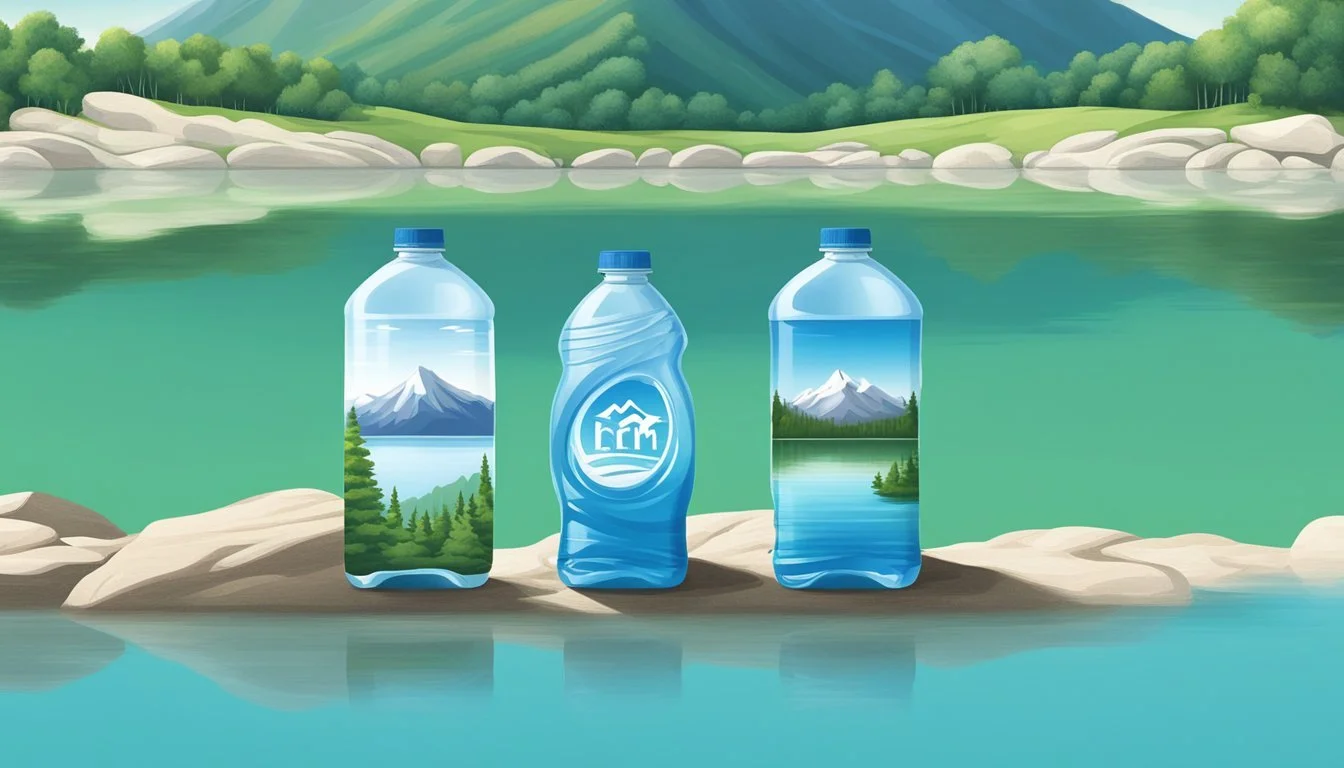Boxed Water vs. Tahoe
Which Bottled Water is Better?
Shifting consumer behavior has sparked interest in sustainable drinking water options, leading many to question whether boxed water can outshine traditional bottled water brands like Tahoe. Boxed Water Is Better, a prominent brand in this category, has made a name for itself with its eco-friendly packaging. Their water comes in paper-based cartons designed to reduce plastic waste, a stark contrast to the 100% plastic bottles used by traditional brands. Boxed Water is often deemed superior in terms of environmental impact, boasting significant reductions in ozone depletion and global warming potential compared to its plastic and aluminum counterparts.
However, it's not just about the packaging. The taste and overall drinking experience play a vital role in consumer choices. Boxed Water is noted for its neutral and crisp taste, making it highly refreshing. Tahoe, on the other hand, is praised for its pure and reliable quality, though some detect a slight tang that might not appeal to everyone.
The final consideration comes down to convenience and recyclability. While Boxed Water offers a fun, milk box-style design, making recycling can be challenging in areas without carton recycling facilities. Tahoe's plastic bottles, though environmentally unfriendly, are often more readily recyclable. This article dives deeper into these aspects to help you decide which brand best meets your values and preferences.
Environmental Impact of Packaging Materials
Understanding the environmental impact of different packaging materials is crucial. This section will explore the comparison of Boxed Water's cartons and traditional plastic water bottles and discuss the specific consequences and benefits of using sustainable materials.
Comparison of Boxed Water and Plastic Water Bottles
Boxed Water cartons are composed primarily of paper (about 75%), with small amounts of plastic and aluminum. This combination makes the cartons mostly recyclable and reduces reliance on fossil fuels compared to fully plastic bottles. In contrast, traditional plastic water bottles are made entirely of PET plastic, which is derived from fossil fuels and exhibits high carbon footprint during production and disposal.
Boxed Water:
74% paper (renewable resource)
1% aluminum
25% plastic film
Plastic Bottles:
100% PET plastic
With FSC-certified paper, Boxed Water supports sustainable forestry practices. Unlike plastic bottles, which often end up in landfills or oceans, Boxed Water cartons are designed for easier recycling when proper facilities are available.
Consequences of Single-Use Plastics
The use of single-use plastics leads to significant environmental pollution. These plastics are not biodegradable and contribute to microplastics in oceans, harming marine life. Organizations like the Ocean Blue Project have documented the extensive damage caused by such pollution.
Key Issues:
Non-biodegradable, contributing to long-term pollution
Microplastics harm to marine ecosystems
High reliance on fossil fuels for production
Single-use plastics also result in considerable greenhouse gas emissions, contributing to climate change. The inefficiencies in their recycling process mean that much of the plastic waste is incinerated or dumped in landfills, further aggravating environmental issues.
Benefits of Sustainable Material Use
Sustainable materials like the paper used in Boxed Water's cartons provide significant environmental benefits. Using renewable resources and sourcing from sustainable forests reduces reliance on non-renewable resources. Paper-based cartons have a smaller carbon footprint than plastic and aluminum.
Environmental Benefits:
Renewable and recyclable materials
Reduced fossil fuel use
Lower carbon footprint and greenhouse gas emissions
Additionally, initiatives to use plant-based materials for packaging caps, like those employed by Just Water, show a commitment to reducing the environmental impact. Recycling infrastructure improvements can further bolster the effectiveness of these sustainable materials, maximizing their positive environmental impact.
Boxed Water's approach to packaging emphasizes sustainable stewardship and supports global efforts to mitigate the negative effects of single-use plastics. Their innovative packaging helps propel the movement towards more environmentally responsible consumption.
Health and Safety Considerations
Health and safety of bottled water products center on the purity of water sources and the safety of packaging materials. Key factors include the potential risks associated with chemicals in packaging and the materials' impact on health.
Safety of Water Sources and Packaging
Boxed Water and Tahoe must prioritize the purity of their water sources to ensure consumer safety. Boxed Water purifies its water through ultraviolet light, carbon filtration, and reverse osmosis, ensuring the removal of impurities. In contrast, specific purification methods used by Tahoe need clear detailing, which influences consumer choices.
Packaging safety is vital too. Boxed Water uses a mix of paper cartons, plant-based plastics, and minimal other materials. Tahoe typically uses glass bottles for its premium feel and chemical stability. Consumers may prefer glass or stainless steel due to reduced chemical leaching risks compared to plastic components.
Potential Risks of Chemicals in Packaging
Packaging materials can introduce various health risks. Boxed Water's cartons contain 25% plastic, leading to concerns about chemical leaching, including BPA which can impact health. On the other hand, Tahoe's glass bottles, do not have such chemicals, making them a safer option health-wise. The plant-based plastics in Boxed Water, while better for the environment, still pose some risk.
Environmental impact is another consideration. Boxed Water's packaging aims to reduce ozone depletion and acidification compared to typical plastic bottles. Glass bottles, known for their recyclability and lack of chemical interaction, further enhance both health and environmental safety. However, the use of stainless steel in packaging is not clearly mentioned, which would offer another non-leaching, durable alternative.
Industry Certifications and Standards
Industry certifications and standards play a critical role in guiding consumer choices and ensuring environmental responsibility in the bottled and packaged water sector. Specific certifications indicate the sustainability of a product, while industry standards ensure the quality and safety of the water.
Significance of Environmental Certifications
Environmental certifications like FSC-Certified (Forest Stewardship Council) are important indicators of a brand's commitment to sustainability. For instance, Boxed Water cartons are predominantly made from paper, which is often sourced from FSC-certified forests. This aligns with the mission to reduce plastic waste and promote renewable resources.
Such certifications assure consumers that the product they are purchasing adheres to strict environmental standards. Water brands such as Essentia, Dasani, Aquafina, and Poland Spring are increasingly seeking out these certifications to appeal to eco-conscious consumers.
Implementing certifications not only aids in reducing the carbon footprint but also promotes transparency within the industry, encouraging other brands to adopt sustainable practices.
Impact of Industry Standards on Consumer Choices
Industry standards for bottled and packaged water focus on maintaining safety, quality, and environmental impact. These standards, sometimes set by organizations like the International Bottled Water Association (IBWA), guide practices across the industry. They ensure that brands like Essentia, Dasani, and Aquafina consistently meet quality benchmarks.
Consumers are likely to prefer products that adhere to high industry standards. This preference influences purchasing decisions significantly. Standards also cover the lifespan of packaging materials, with a focus on reducing the reliance on petroleum-based plastics.
Brands that comply with these standards demonstrate their commitment to both consumer health and environmental stewardship. This dual focus ensures the longevity and trustworthiness of the brand in the competitive market.
Consumer Experience and Practicality
When comparing Boxed Water and Tahoe, the key areas of consumer experience and practicality offer insights into their convenience, taste, and accessibility.
Convenience of Boxed vs. Traditional Bottled Water
Boxed Water provides an eco-friendly option with its paper-based packaging. Consumers find it lightweight and easy to carry. Unlike traditional plastic bottles, Boxed Water cartons can be flattened after use, saving space when disposed of or recycled.
Traditional bottled water, while familiar, adds more plastic waste. Reusable water bottles mitigate this, offering a refillable option. For those prioritizing the environment, Boxed Water’s packaging, made from 74% paper, 1% aluminum, and 25% plastic, reduces reliance on single-use plastics.
Preference for Taste and Accessibility
Taste remains a significant factor. Boxed Water Is Better offers a taste described as crisp and refreshing. Consumers appreciate its neutral flavor profile.
Tahoe water often emphasizes its origin and purity, attracting individuals seeking premium bottled water. The availability of flavored water from both Boxed Water and other brands broadens consumer choices.
Accessibility also varies. Traditional bottled water, like Tahoe, is widely available. Boxed Water, though gaining popularity, might not be as prevalent but appeals to environmentally conscious buyers. Tap water and refillable bottles represent other accessible, sustainable options.
Corporate Responsibility and Brand Initiatives
Both Boxed Water and Tahoe have made strides in the beverage industry, emphasizing environmental sustainability and meaningful partnerships to enhance their corporate responsibility.
Environmental Stewardship in the Beverage Industry
Boxed Water Is Better takes pride in its environmentally friendly packaging. Utilizing a mix of 74% paper, 1% aluminum, and 25% plastic film, they aim to reduce reliance on traditional plastic bottles. This choice significantly lessens the environmental impact, addressing issues like chemical leaching and waste.
Just Water emphasizes a bio-plastic cap and predominantly paper-based packaging. These materials promote sustainability, reducing the carbon footprint compared to conventional plastic bottles. Their innovative design not only limits waste but also contributes to a circular economy in the beverage industry.
Partnerships and Collaborations for Sustainability
Boxed Water collaborates with organizations like the Ocean Blue Project to enhance its environmental efforts. They engage in beach cleanups and other initiatives to combat plastic pollution, demonstrating a commitment to marine conservation. Their strategic partnerships amplify their impact beyond just packaging solutions.
Just Water also aligns with sustainability-focused groups, fostering collaborations that drive eco-friendly innovations. Working alongside various environmental organizations, they strive to promote recycling, reduce waste, and support sustainability initiatives. This proactive approach underscores their dedication to addressing global environmental challenges.
Both brands leverage these partnerships to advocate for sustainability, positioning themselves as forward-thinking leaders in the bottled water market.
Environmental Marketing and Consumer Perceptions
Environmental marketing plays a crucial role in shaping consumer perceptions of Boxed Water and Tahoe. Key areas of focus include the impact of greenwashing in branding and consumer behavior influenced by environmental awareness.
Analysis of Greenwashing in Water Branding
Greenwashing occurs when companies make exaggerated or misleading claims about their environmental practices. In the context of bottled water, brands often highlight "eco-friendly" packaging to attract environmentally conscious consumers. For example, Boxed Water emphasizes its 92% plant-based packaging, which might appeal to those seeking sustainable alternatives.
However, critics argue that not all environmental claims withstand scrutiny. Marketing strategies that prioritize imagery over measurable impact can mislead consumers. This practice raises questions about the genuine sustainability of such products. Transparent, verifiable claims are essential in avoiding greenwashing and earning consumer trust.
Consumer Behavior and Environmental Awareness
Consumer behavior is significantly influenced by environmental awareness. Surveys indicate that a notable percentage of Americans perceive bottled water as safer and purer than tap water, driving its popularity. Brands like Boxed Water leverage this by promoting their packaging as an eco-friendly choice.
With the rise of environmental consciousness, consumers are more vigilant about their purchases. They often look for credible certifications and detailed environmental records. Boxed Water’s Lifecycle Assessment provides insights into the cradle-to-grave impact of its product, helping environmentally conscious buyers make informed decisions. Conversely, skepticism toward vague green claims can deter purchases, emphasizing the need for transparency.
Innovation and Future Trends in Water Packaging
The field of water packaging is undergoing significant transformations. It is moving towards sustainable solutions like paper-based cartons and plant-based caps, with technology playing a critical role in these advancements.
Emerging Alternatives to Traditional Packaging
Paper-Based Cartons: Companies such as Boxed Water are leading the shift towards sustainable packaging. Their cartons are composed of 74% paper, 1% aluminum, and 25% plastic film, aiming to replace single-use plastic bottles.
Canned Water: Aluminum cans are being adopted by brands such as Tahoe. Aluminum is infinitely recyclable, making it a more sustainable choice compared to traditional plastic bottles.
Boxed Water's reliance on paper reduces plastic consumption significantly. Both the paper and aluminum used in these innovations are designed to minimize environmental impact.
Role of Technology in Sustainable Packaging
Plant-Based Cap: Innovations like the bio-plastic cap used by Just Water exemplify the shift towards renewable materials. These caps are sourced from plants, reducing reliance on fossil fuels.
Tetrapak Developments: Tetrapak technology, which blends paper, plastic, and aluminum, continues to evolve, offering more efficient and sustainable ways to package water.
These technological advances not only contribute to environmental sustainability but also help maintain the integrity and safety of the packaged water. Enhanced barrier properties and improved recycling methods are some key areas where technology is making a significant impact.
Conclusion
Boxed Water supports sustainable development through its innovative paper-based packaging.
Tahoe Water primarily uses plastic bottles, which contribute to global warming and smog emissions.
Boxed Water cartons are made of 74% paper, reducing deforestation impacts.
Boxed Water's focus on reusability helps in waste management, while Tahoe Water's single-use bottles fall short.
The environmental impact of Boxed Water includes reduced ozone depletion compared to Tahoe Water's plastic packaging.
Boxed Water uses a unique lid design that is also recyclable.
Tahoe Water's packaging consumes more energy in production and recycling processes.
In terms of ease of recycling, Boxed Water's materials are more straightforward than Tahoe's plastic bottles.
Packaging Comparison:
Attribute Boxed Water Tahoe Water Material Paper, Aluminum, Plastic Film Plastic Recyclability High Moderate Energy Use Low High
Environmental Impact Factors:
Global Warming: Lower for Boxed Water
Recycling: Easier for Boxed Water
Waste Management: Better addressed by Boxed Water
Smog Emissions: Lower with Boxed Water
Boxed Water emerges as a strong contender in environmental sustainability, while Tahoe Water's plastic usage presents challenges.







